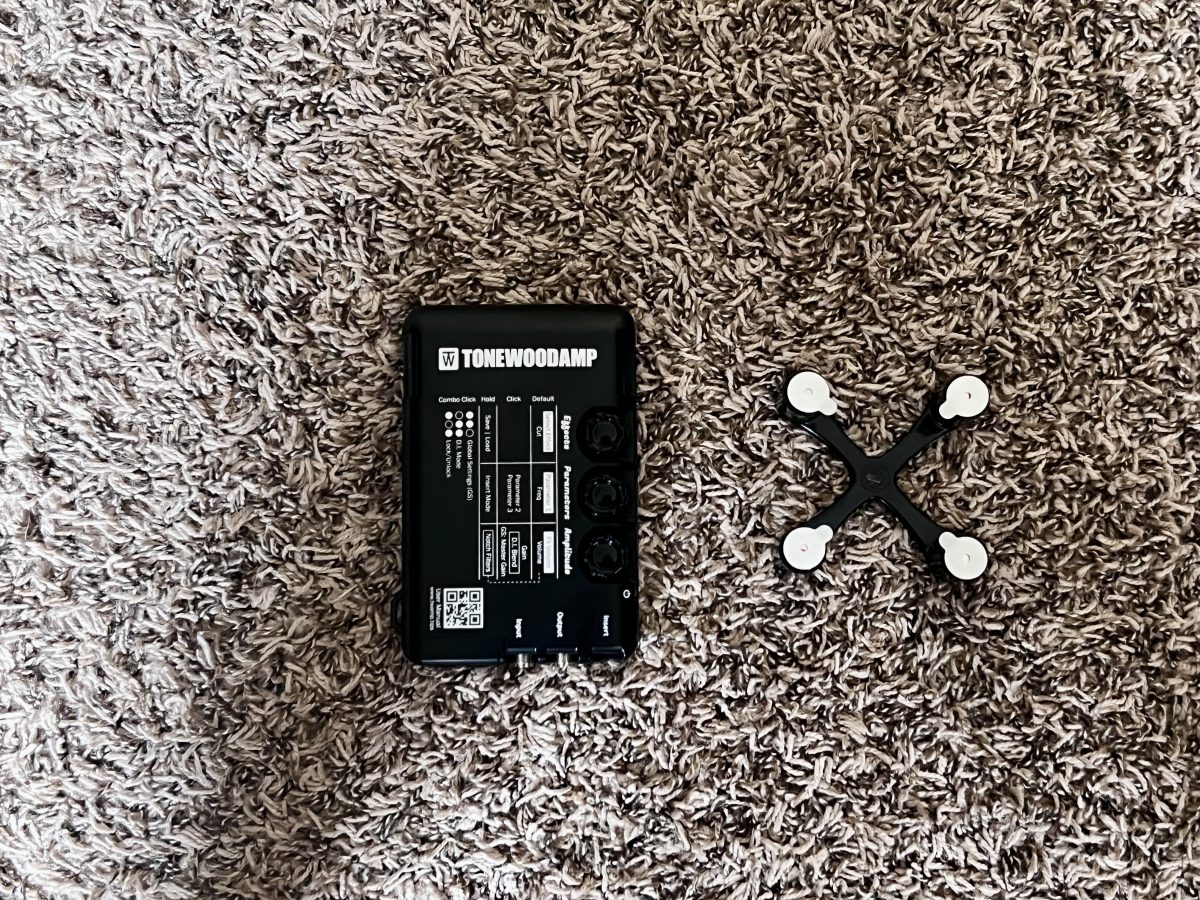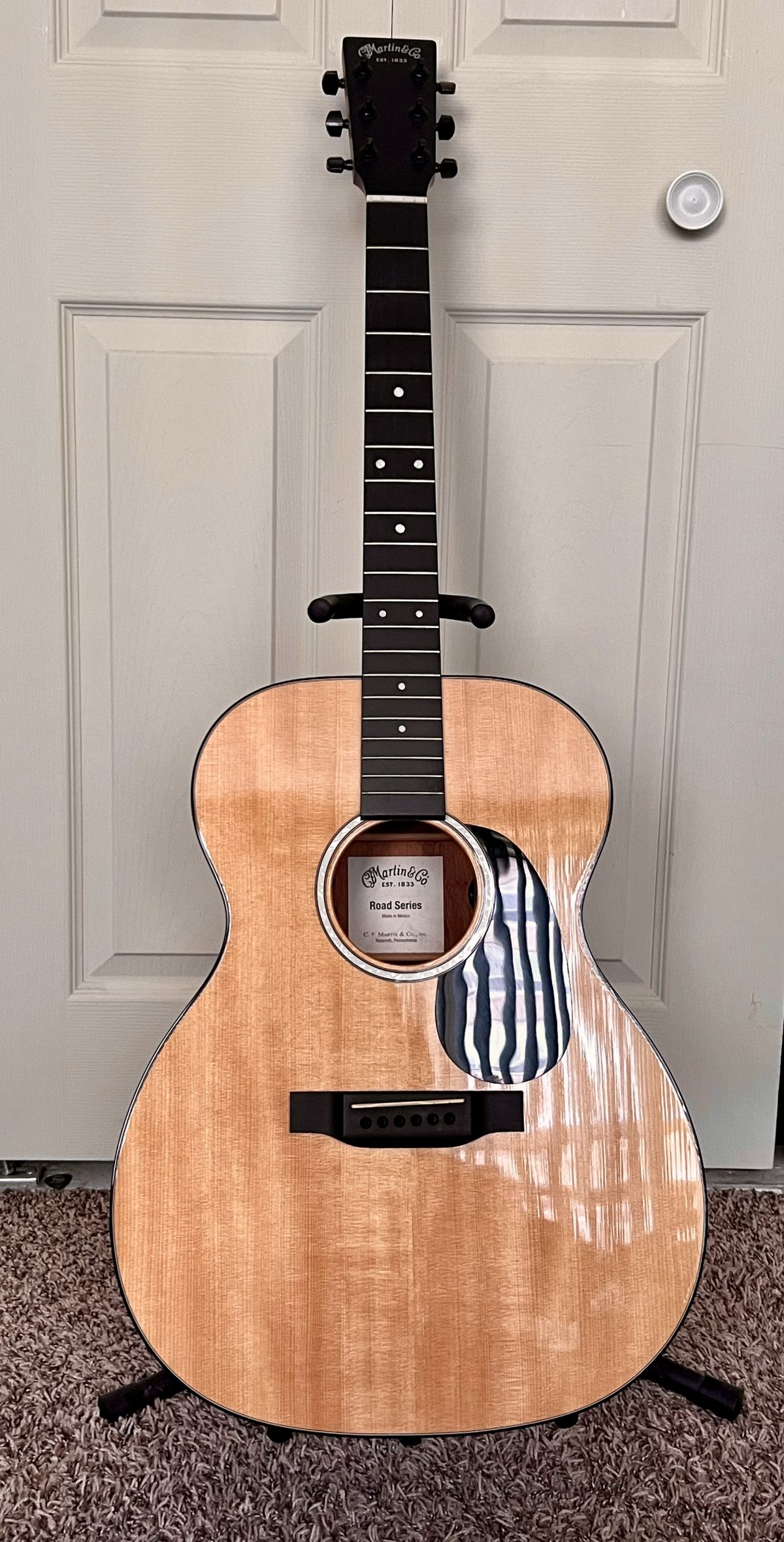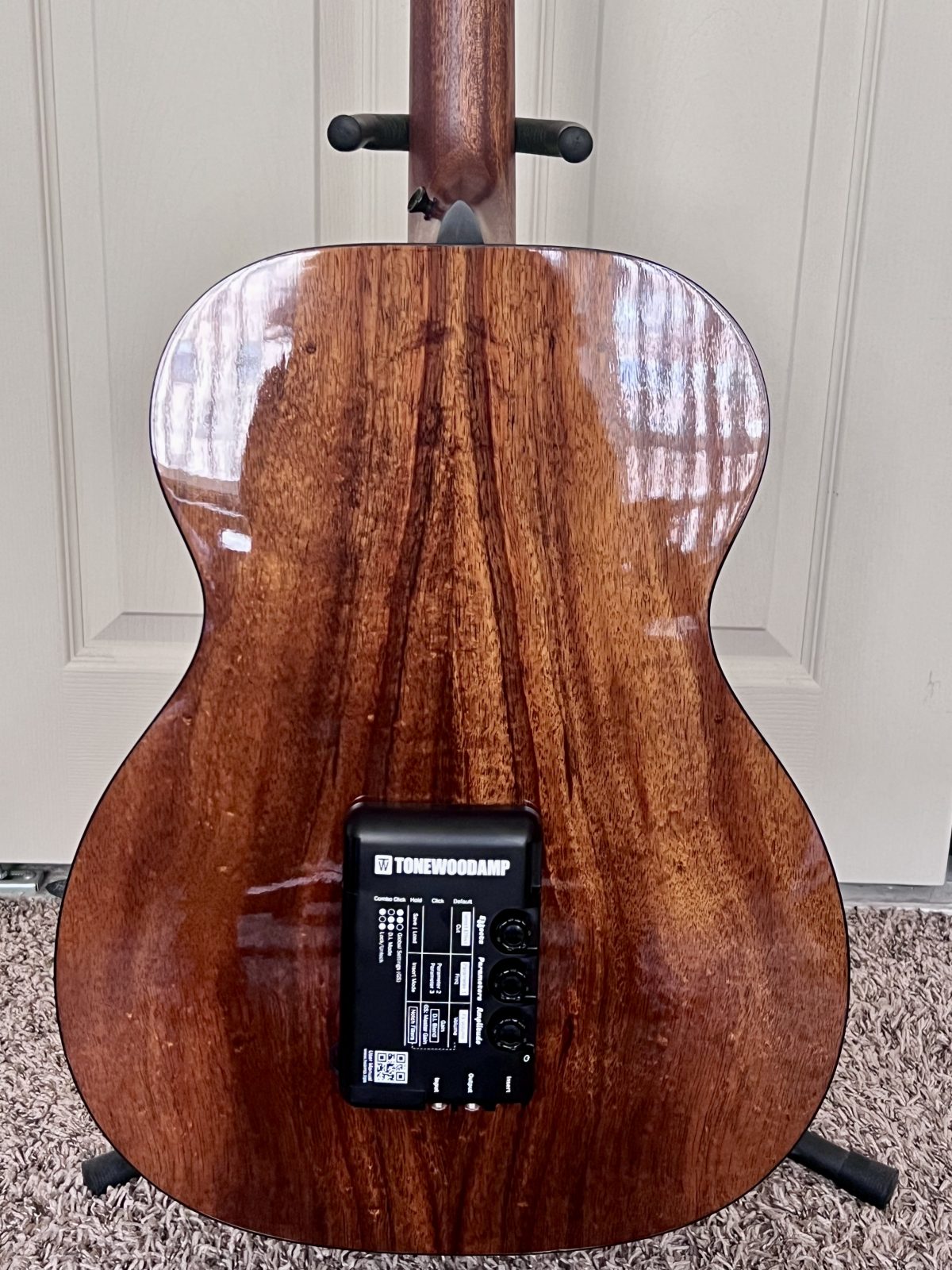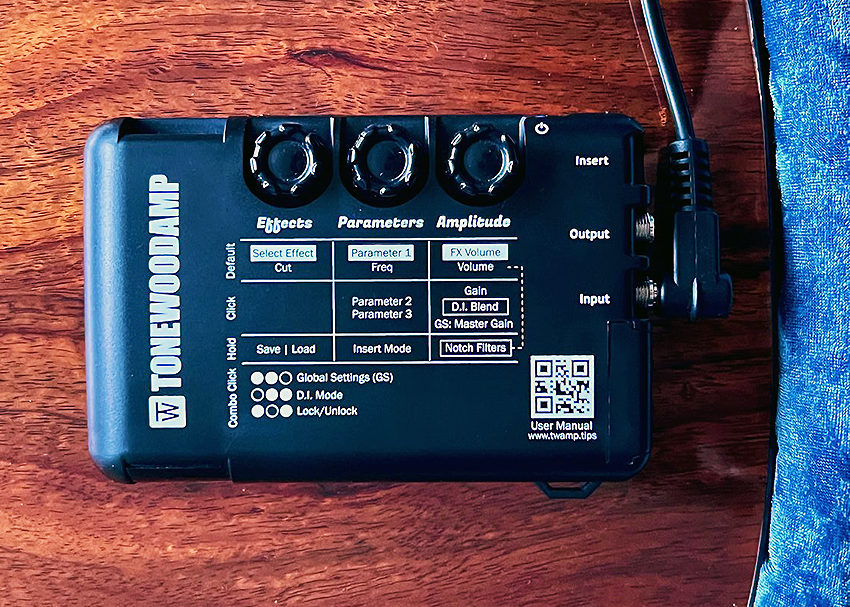I grew up as the “electric guitar guy” who always kept an acoustic guitar in the corner. Only learning the acoustic hits from my favorite rock bands of the ’80s and ’90s here and there was enough for me. As I’ve gotten older, I’ve broadened my acoustic guitar repertoire, but it never became my main day-to-day playing interest. In comes a device that would flip my acoustic guitar experience on its head: The ToneWoodAmp. Could this become my go-to acoustic guitar gadget? Take a dive with me as I run it through its paces to find out!
Installing the ToneWoodAmp
Before you can feel the magic of the ToneWoodAmp, you’ll have to install it on your guitar. Proper installation is important to ensuring you get the best sound possible from this device. Getting it set up can be a bit tricky, so I would recommend checking out the official ToneWoodAmp installation guide that I (and many others) followed for assistance:
My installation experience

Throughout the installation process, it’s really important to try the unit in a number of different spots to see what spot works best for your guitar. Initially I settled on having the amp on the middle of the back 8 inches from the bottom. I played with it there for a few weeks actually, but ended up not being happy with the output of the effect. So, I decided to move the amp down a few inches, and the FX resonated much stronger than they did in the unit’s original spot.


First Impressions
I turned the unit on, switched it to the first hall reverb, and strummed the prettiest sounding chord I could think of, letting it ring out for as long as possible. Immediately I asked myself, “where is the effect coming from?” It felt as if the reverb was being washed around me like I had just strummed this chord on a large stage. No, I was in fact still sitting in my studio, but the ToneWoodAmp managed to transport me to a different place entirely.
As I cycled through the different reverbs, delays and modulation FX, it instantly became clear to me that this device was going to transform my acoustic guitar playing experience. The effects are very present and blend with the natural sound of my acoustic guitar better than I had hoped. However, as good as the FX sounded out of the box, they can (and should) still be tweaked to your guitar and its setup.
Dialing In Tones (Gain and Volume)
Before diving into the FX themselves, I focused on balancing the volume and master gain of the TWA to the volume/gain of my guitar’s pickup system. For basic guidelines, I followed the video below:
Dialing in tones with flexibility
Throughout my setup process, I was able to take advantage of the flexible settings of the ToneWoodAmp to make sure the FX sounded as good as possible with my guitar. For example, it has a naturally good blend out of the box with the natural sound of the acoustic guitar, but if I wanted the effect to be more aggressive or more subtle, I was able to make those changes. Since I prefer a natural sounding blend, I opted to tune each effect to sound subtle but effective.
Adjusting gain and volume with the parameters of each effect is the key to striking this balance. At the end of the day, regardless of the route you choose, the ToneWoodAmp’s effects will sound great once dialed in to your preference. Once I got everything dialed in how I liked it, I was ready to dive in and become acquainted with all of the effects.
ToneWoodAmp Effects

Reverbs & Delays
There are 3 main reverbs (hall, room, and plate) and a delay setting within the ToneWoodAmp. I believe that a little bit of reverb should be added to any guitar sound, so the onboard reverbs would definitely be my most used effects. So how do they hold up?
1.) Hall – When dialed in to my preferences, this reverb is perfect. It has color and warmth that complements the naturally warmer tone of my Martin guitar.
2.) Room – When you want to add a subtle, intimate reverb that is more felt than heard, this is the choice. This reverb gives just the right amount of space to my sound.
3.) Plate – The brightness of this reverb blends really well with the tone of my guitar, creating a unique sound. This is my go-to when I want to add variety.
4. Delay – Clean, simple and effective. With the ability to stack reverb with this delay, it easily stands as my most used effect for everyday playing.
Modulation Effects
Settings 5-8 contain your modulation effects. These options are just plain fun, and some of them I probably would not have added to my acoustic guitar sound if not for the ToneWoodAmp!
5.) Tremolo – The brightness of the tremolo adds a shimmer after effect that really colors my tone nicely. This setting is great for tunes/parts with a lot of space.
6.) Leslie – While similar to the tremolo setting when set up in higher speeds, I do enjoy the eeriness it adds to my tone. Stacked with reverb, this effect shines with slower paced guitar pieces with a lot of space.
7.) Auto Wah – While I do feel there is a lack of blend with the auto wah, I can’t deny how fun it is to use this with an acoustic guitar. It’s bright and easily cuts through.
8.) Chorus – To me, this sounds just like my Boss CH-1 Chorus pedal I’ve been using for years. The familiarity was an instant win for this effect being in the ToneWoodAmp. The shimmer and warm color compliment my acoustic sound really well.
Recording the ToneWoodAmp DI vs Mic’d

Without a doubt, the ToneWoodAmp sounds great on its own. But then I got to thinking, how would this sound in the studio? Could I show up to a studio with just my guitar and the ToneWoodAmp and not just get away with it, but create something that sounds great? I decided to do a shootout comparing how the ToneWoodAmp effects sound mic’d vs. through DI.
Rules of the shootout
For this test, I’ll be using preset 4 (delay with a touch of reverb added.) These are the effects I would add to color any track I would use my acoustic guitar for in the real world. Each recording test will have a track with no effect to compare the differences, as well as comparing the effects tracks directly to each other. I will be using an Audio-Technica AT-2020 microphone, a Martin 00012e acoustic guitar and a Focusrite Scarlett 2i2 3rd Gen USB Audio Interface. All tracks were recorded in Logic Pro X.
Test #1: Microphone Test
Guitar Mic’d with the ToneWoodAmp Turned Off
Guitar Mic’d with the ToneWoodAmp Turned On
Listening to the clean track vs the fx track back to back, the delay/reverb feel like a nice, natural and subtle addition to the sound.
Test #2: DI Test
Guitar with DI input – ToneWoodAmp Turned Off
Guitar with DI input – ToneWoodAmp Turned On
The Delay and Reverb and much more present in the DI setup. I did have to lower the volume and gain of the effect for this test because it was too overpowering with the same settings as the mic test.
Test #3: Direct Comparison
Guitar with DI input – ToneWoodAmp Turned On
Guitar Mic’d with the ToneWoodAmp Turned On
Results
Both the DI and mic’d options have their strengths. The delay/reverb are very present and colorful through the DI option while the mic’d option helps the effect keep its warmth, blending with the tone of the guitar nicely. However, I personally prefer how the ToneWoodAmp performed mic’d better than in the DI set up due to blend and control. I thought the DI option separated the signal and the effect more than I would have preferred.
Performing Live with the ToneWoodAmp
I had my answer regarding preference in the studio, but how does the ToneWoodAmp perform in a live concert situation? I think we all imagine ourselves around a camp fire using this device to really drive the mood over the edge, but what about on stage through a PA system? Well, I set out to get the answer.
I soundchecked both mic’d and through DI. I was originally going to opt for the mic’d setup but we were experiencing some technical issues. Thankfully, the ToneWoodAmp’s versatility allowed me to pivot to a DI input directly through the device. I configured my settings to the environment which was easy thanks to the intuitive parameters available in the settings
Without a doubt, the ToneWoodAmp enhanced the performance beautifully. I used the room reverb through the whole show and it complemented each song flawlessly. There were some songs where I dialed in more or less reverb on the fly which also felt great to do on stage. All in all, I highly recommend this device for the stage.
Conclusion
So, did the ToneWoodAmp end up becoming my next go-to gadget for playing acoustic guitar? A resounding YES. While there were a few scenarios that I didn’t prefer the TWA’s performance in, that’s really the case with most pedals or even guitars. You tweak them and discover their best use case scenario. I’m happy to say that this device not only enhances and makes my day to day playing more fun, but it has also proven to hold up in the studio and in live concert situations. If you’re looking to take your acoustic guitar experience to the next level, get yourself a ToneWoodAmp!




Leave a Reply